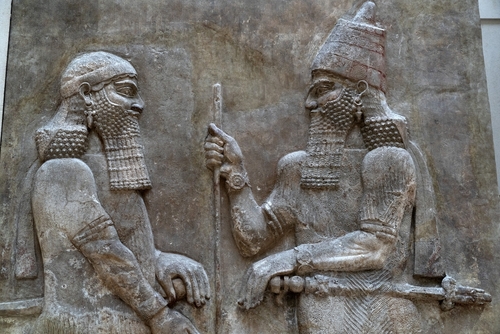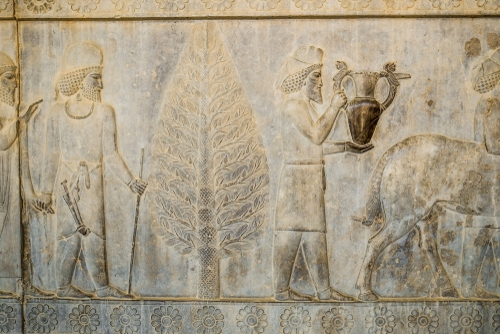The Babylonian Empire, known for its wealth, grandeur, and innovative achievements, was a significant civilization that arose in Mesopotamia (modern-day Iraq) from the ancient city-state of Babylon.
This influential empire evolved through several stages including the Old Babylonian Period, the Middle Babylonian/Kassite Period, and the Neo-Babylonian Empire.
Its most famous rulers include Hammurabi, who crafted one of the world’s oldest law codes, and Nebuchadnezzar II, who is said to have constructed the Hanging Gardens, one of the Seven Wonders of the Ancient World.
From significant strides in astronomy, literature, architecture, and law, to a complex system of administration and cultural progression, the Babylonian Empire has had an indelible impact on the course of human history.
However, like many great empires, Babylon also had its share of decline and downfall, ultimately getting conquered by the Persians in 539 BCE, marking the end of Babylonian supremacy in the region.
| Period | Time Frame | Key Events |
|---|---|---|
| Old Babylonian | 2000-1595 BCE | – Babylon gains independence from Akkadian Empire (1894 BCE). – Reign of Hammurabi, creation of the Code of Hammurabi, expansion of Babylon (1792-1750 BCE). – The Hittites sack Babylon, ending the Old Babylonian Empire (1595 BCE). |
| Middle Babylonian / Kassite | 1595–1155 BCE | – Kassites control Babylonia, maintain Babylonian cultural traditions and add their own (1595-1155 BCE). |
| Neo-Babylonian | 626–539 BCE | – Nabopolassar becomes king, establishing the Neo-Babylonian Empire (626 BCE). – Reign of Nebuchadnezzar II, construction of the Hanging Gardens, destruction of First Temple in Jerusalem (605-562 BCE). – Cyrus the Great conquers Babylon, marking end of Babylonian Empire (539 BCE). |

Timeline of the Babylonian Empire
Old Babylonian Period (c. 2000-1595 BCE)
This period of Babylon’s history is noted for the significant advancements in law, architecture, and astronomy.
The most famous ruler of this period, Hammurabi (1792-1750 BCE), is known for his creation of the Code of Hammurabi, one of the oldest sets of laws in the world.
Also Read: Babylonians Accomplishments
It laid out rules on a wide range of issues, from trade and business to crime and punishment. Babylon under Hammurabi became a major power, controlling cities across Mesopotamia.
However, following Hammurabi’s death, the empire began a slow decline, culminating in the sack of Babylon by the Hittites in 1595 BCE, effectively ending the Old Babylonian Empire.
Middle Babylonian / Kassite Period (c. 1595–1155 BCE)
The Kassites, an ancient Near East people who spoke a language isolate, took control of Babylon after the fall of the Old Babylonian Empire.
They maintained the Babylonian traditions, effectively preserving the culture, religion, and administrative systems of the region.
Also Read: Babylonians Facts
The Kassites not only adopted the cuneiform script of the Babylonians, but they also continued to use the Code of Hammurabi and to worship the Babylonian gods.
This era is noted for peace and stability, and the Kassites were able to rule Babylonia for around 400 years, making it the longest dynasty in Babylonian history.

Neo-Babylonian Empire (626–539 BCE)
The Neo-Babylonian Empire is most known for its architecture and its conflict with the Jewish people. Nabopolassar founded the empire in 626 BCE. His son, Nebuchadnezzar II (605-562 BCE), is probably the most famous Babylonian king.
He is credited with building the Hanging Gardens of Babylon, considered one of the Seven Wonders of the Ancient World. He also laid siege to Jerusalem, destroyed the First Temple, and initiated the Babylonian captivity of the Jews.
Despite these achievements, the empire began to decline after his death, and it eventually fell to the Persians under Cyrus the Great in 539 BCE. This marked the end of the Babylonian Empire and the beginning of the Achaemenid Empire.
